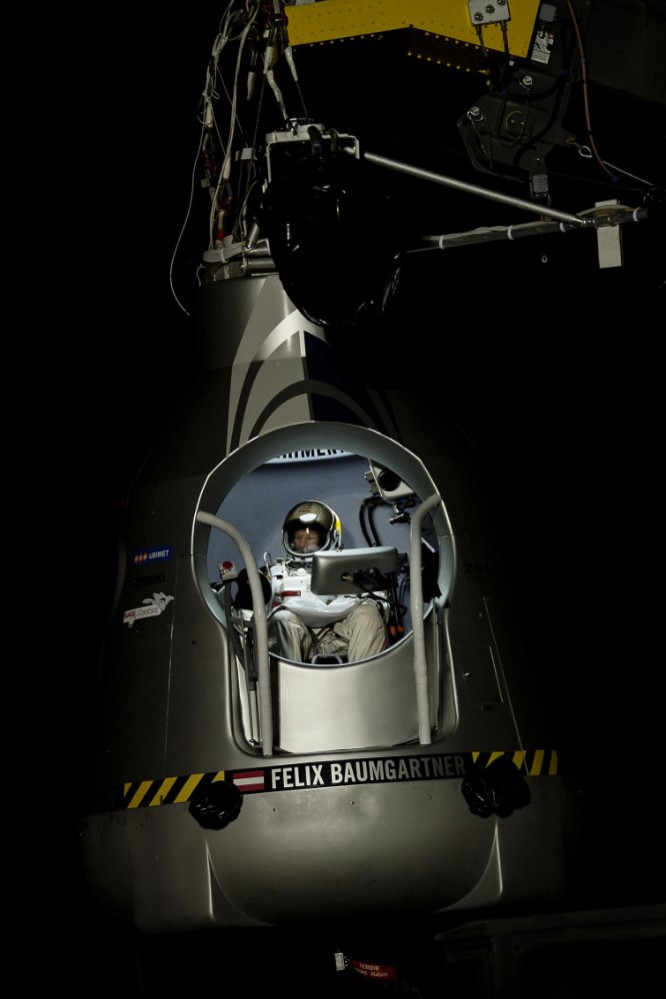Baumgartner's Suit Might Have 'The Right Stuff' To Help Astronauts

People across the world are anticipating skydiver Felix Baumgartner’s 120,000-foot drop on Tuesday with a mixture of fear and exhilaration. But the folks at NASA and private companies like SpaceX have an extra reason to watch the Austrian daredevil’s descent. Baumgartner’s success or failure could lead to insights that help shape a new generation of spacesuits and safety measures for astronauts and space tourists alike.
Baumgartner’s special pressurized suit is the one thing separating him from freezing temperatures, dangerously low air pressure, and a lack of oxygen. The suit has four layers: an insulating outer layer, followed by netting that holds a fitted bladder, and a softer innermost layer for comfort.
The suit, made by the David Clark Company, can maintain an internal pressure equivalent to 35,000 feet. NASA astronauts also wear pressurized suits, but theirs are much less maneuverable. It’s crucial for Baumgartner to be able to move around so he can enter the arrow-like “delta position” after he hops of the capsule. By keeping his head down and arms at his side, Baumgartner is less likely to enter a lateral spin that could easily knock him out or even kill him.
“If Baumgartner plummets 120,000 feet, reaches a speed of 700 miles an hour, and survives, the Red Bull Stratos team will have done much more than enter a number in a record book,” Atlantic writer Andrew Zaleski wrote. “It will have conceptualized, produced, and tested a pressure suit that just might make it possible for future space travelers—astronauts and civilians alike—to bail out of crippled ships at altitudes and speeds not previously survivable.”
Baumgartner’s dive is fraught with dangers. If his suit rips, he could freeze, develop dangerous gas bubbles in his blood, or pass out. Spinning could create huge gravitational forces that would force fluid into his eyeballs and cause blood clots in his brain. Plus, scientists still aren’t sure what the effects of breaking the sound barrier would be on a relatively unprotected human body.
“All the things that can happen are varying degrees of bad,” the Red Bull Stratos mission medical advisor and former NASA flight surgeon Jonathan Clark told the Associated Press.
But if successful, any kind of system that could be used to help astronauts ditch a foundering spacecraft would be better than the present system. NASA had an inflight crew escape system in place on the now-mothballed shuttle program, but only when an orbiter is in controlled gliding flight and can’t reach a runway.
NASA acknowledged at the time that even in the ideal situation, “the probability of the flight crew surviving a ditching is very slim.”
Clark has a particularly personal reason to work for better astronaut safety measures; he is the widower of astronaut Laurel Clark, killed in the 2003 Space Shuttle Columbia accident.
© Copyright IBTimes 2025. All rights reserved.




















